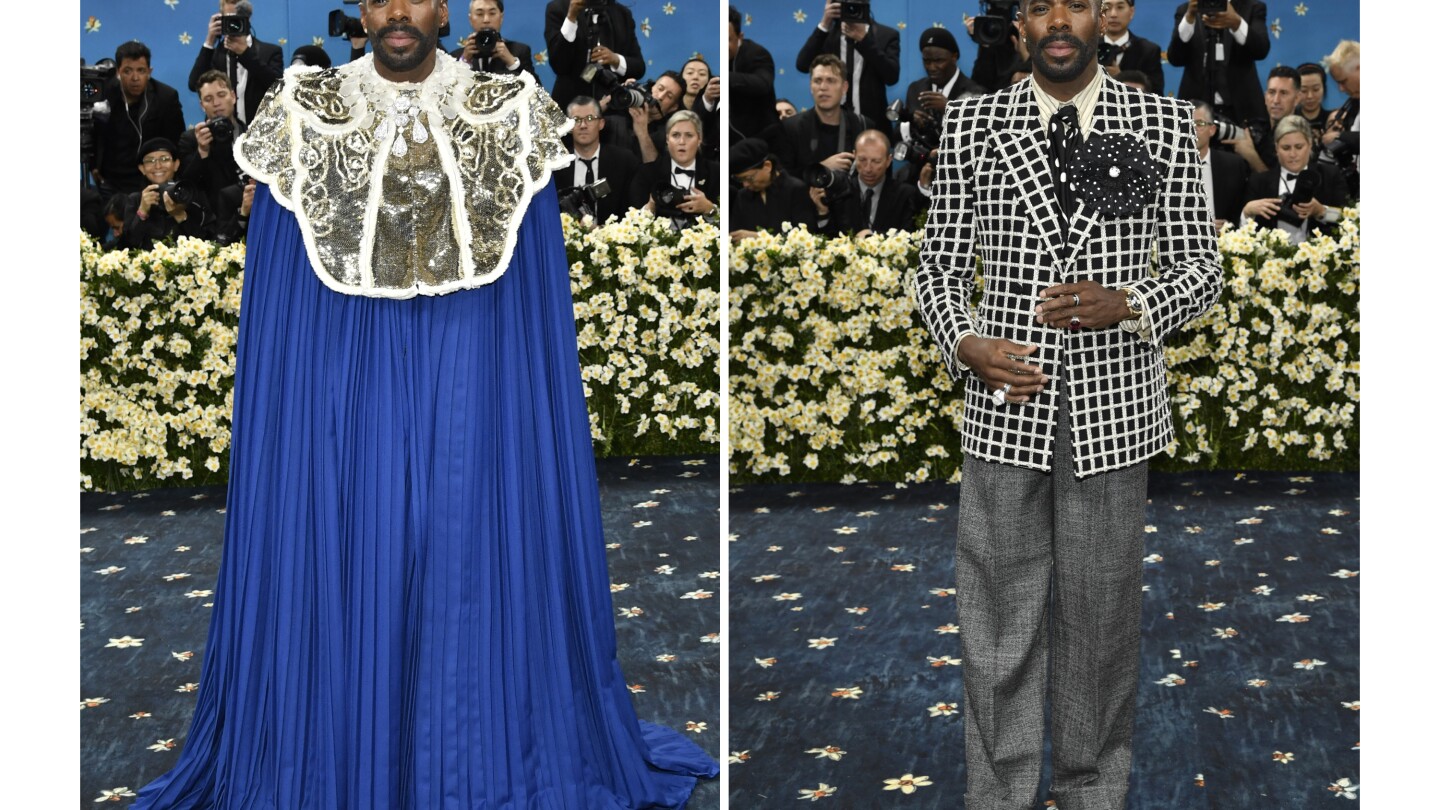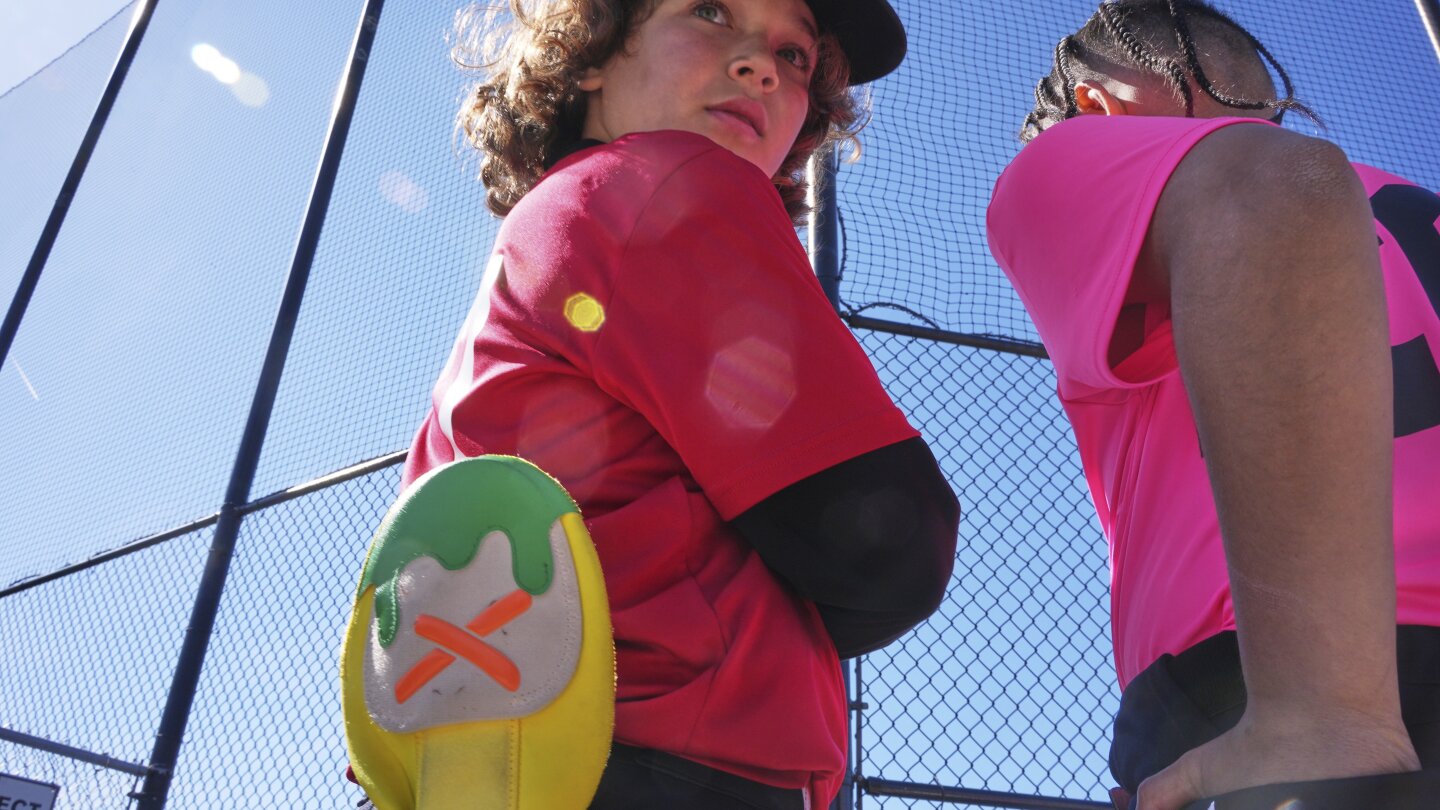Lifestyle
One Tech Tip: Skype shut down for good, but users still have these alternatives

LONDON (AP) — Skype is dead. What now?
Microsoft’s shutdown of Skype on May 5 sent millions of users scrambling to find an alternative to the pioneering internet phone service.
Skype, which Microsoft bought in 2011, was beloved by a dwindling group of users who appreciated how it let them make cheap long-distance calls as well as communicate with other users through chat messages, voice or video calls.
Some liked its simplicity and ease of use — an advantage, for example, when setting up a communications app for an elderly parent living far away.
Or they just used it out of habit.
Skype was founded in 2003 and was among the first in a wave of communication services that used voice over internet protocol technology (VoIP), which converts audio into a digital signal.
Skype’s disappearance also inconveniences Americans and other expatriates living overseas who signed up because they needed an U.S.-based number to receive text authentication codes from, say, a bank back home. It was also handy for calling 800 numbers for free even if you weren’t living in North America.
Here is a guide for life after Skype:
What’s happening
Microsoft announced in late February that it was shutting down Skype on May 5 and shifting some of its services to Microsoft Teams, its flagship office videoconferencing and group collaboration platform.
Skype users can use their existing accounts to log into Teams and have the option to automatically migrate their contacts and chats.
If you had a Skype number or a calling subscription, it stopped automatically renewing on April 3.
If your account still has credit, you can access Skype’s dial pad from the web portal or Teams to make calls.
Skype numbers won’t immediately expire on May 5 so you’ll still be able to receive calls until your subscription expires. But you’ll have to use Teams or keep the Skype dial pad open on the web portal to receive them.
Porting your number(s)
If your Skype number hasn’t expired and you don’t want to lose it, you should transfer it to another provider.
Skype numbers can be ported to a phone carrier or any number of other VoIP services. But you’ll have to start the process through the new provider, not Skype.
Google Voice
Google users can access the online search giant’s internet phone service to make calls from a smartphone or a desktop web browser. You can get your own Google Voice phone number and use features like call forwarding and voicemail. Or you can port your number from another service like Skype, but it will cost $20.
Calls to U.S., Canadian or Puerto Rican numbers are free. Rates for other countries vary.
The free version of Google Voice is only available to U.S. residents physically located in the 48 contiguous states, so that means expatriate Americans can only use it if they registered before they moved overseas.
“You cannot sign up for a Google Voice number while outside the USA,” according to a help page. “Do not try to circumvent this by using a VPN.”
Viber
Owned by Japan’s Rakuten, Viber was long considered one of the closest competitors to Skype. One key difference is that Skype users don’t need a phone number and are identified by their usernames, while Viber users need a number to register for service.
Similar to Skype, Viber users can buy credit or packages to call phone numbers around the world but it’s no longer possible to get a Viber number to receive calls.
Zoom
The videoconferencing service that’s become a byword for online company meetings offers a calling service, Zoom Phone, and features like number porting and the ability to send and receive SMS text messages.
Take note that Zoom Phone isn’t free. There are various calling plans that involve a monthly subscription cost and extra fees for international calls.
Teams
Microsoft users have the option of making calls on Teams, dubbed Teams Phone. Like Zoom Phone, you’ll need to buy a subscription and pay extra for international calls.
But it’s not an option for regular people because Microsoft says Teams Phone isn’t for consumer use and is only available to small and medium-sized businesses.
Wireless Carriers
If you absolutely need a U.S. number but live overseas, sign up for service with a low-cost virtual wireless carrier that offers cheap cellphone plans or pay-as-you-go rates.
One provider, Tello, offers monthly plans for as little as $5 and says users can activate its service even if they’re living outside the U.S.
Because mobile virtual network operators like Tello are essentially wireless phone companies that piggyback off a bigger carrier’s physical network, you can’t use it to make calls on a computer or an app.
VoIP it
There are a slew of Skype pretenders offering phone calls over the internet, such as Zoiper, VoIP.ms, CallCentric, Mytello, and Virtual Landline. Many are aimed at business users.
Some are capitalizing on Skype’s disappearance. Hushed, which started as an anonymous calling app, bills itself as a Skype alternative. Users can buy a phone number from the U.S., Canada, the United Kingdom or Puerto Rico or port their own number.
It warns that some of its numbers aren’t guaranteed to work with third-party verification text messages.
“We do not intentionally block anyone from receiving these codes, but it’s common that some services will prevent verification texts from being sent to certain phone numbers due to their own security policies,” Hushed says on its website.
Park your number
Maybe you can’t decide which calling service you want to switch to. If you want to save your current number, there are services to just park your number like NumberBarn.com and Parkmyphone.com.
They let you store a phone number for a monthly fee while relaying any text messages sent to that number. You can port the number to another service whenever you want.
Beware, you can only port in U.S. or Canadian phone numbers.
eSIMs
What about an international eSIM? They’re the virtual version of the mobile phone SIM card that you can buy and add to your phone when you’re on a trip to save on roaming fees.
They offer cheap data access rates so you can use the internet without worrying about racking up a huge bill when you get home.
Unfortunately, you can’t port a Skype number to an international eSIM because of “the fundamental differences” between VoIP services and traditional mobile networks, said Pedro Maiquez, co-founder of eSIM provider Holafly. “Skype numbers are not tied to a mobile carrier’s physical infrastructure, making them incompatible with mobile eSIM solutions.”
___
Is there a tech topic that you think needs explaining? Write to us at [email protected] with your suggestions for future editions of One Tech Tip.
Lifestyle
Who were the best and worst dressed at the Met Gala?

NEW YORK (AP) — Pinstripes. All Ways. Hats galore. Pantsuits. Gown suits. Zoot suits. Canes. A single cigar (looking at you Madonna) — and expert displays of tailoring. The Met Gala crowd, for the most part, did the Black dandy menswear theme proud at fashion’s biggest party of the year.
“Those that researched the moment and pulled inspiration from history made it modern and their own. I loved it,” said Holly Alford, assistant dean and an associate professor in the fashion and merchandising program at Virginia Commonwealth University School of the Arts.
Among her favorites: Colman Domingo’s homage to dandy icon André Leon Talley. It was one of many that honored the towering fashion figure, a rare Black fashion editor in a largely white industry. And among others in odes to Talley, who died in 2022, were Anne Hathaway in a Carolina Herrera dress she picked specifically for him.
“We wanted André Leon Talley to look down from heaven and scream ‘GLAMOUR,’” Hathaway said on the Vogue livestream Monday night.
Inventive glamour energy of the night
A glamourous night it was, and an inventive one at that amid a broad White House siege on DEI programs and protections that serve immigrants, LGBTQ+ people and myriad others. What does that have to do with fashion and the theme this year? Everything, in terms of Black power, ownership, heritage and, most importantly, freedom.
What, exactly, was the suggested dress code? It was “Tailored for You,” inspired by Black dandyism through time, the subject of the Metropolitan Museum of Art’s spring show at its Costume Institute.
On the blue carpet, a bit soggy from drenching rain, guests played with the fundamentals of fashion to make their looks their own with the help of designers and stylists. And many honored their heritages in special touches like the cowrie shells on the cuffs of Lewis Hamilton’s Wales Bonner jacket.
The shells pay homage to Black diasporic culture, to spirituality, to memory, said Rikki Byrd, assistant professor of Visual Culture Studies at the University of Texas at Austin and founder of the Black Fashion Archive.
Tessa Thompson honored Talley with a fan adorned with his image.
“It’s representative of a church fan and Andre Leon Talley often talked about his first introduction to fashion was through his church,” Byrd said.
Teyana Taylor was a standout for Shantrelle P. Lewis, author of “Dandy Lion: The Black Dandy and Street Style.” With her cane, in her red velvet cape, “she understood the assignment,” Lewis said. Taylor’s cape was emblazoned with her nickname in honor of her home turf: “Harlem Rose.” And she, like Swizz Beatz, donned a durag.
Some underwhelmed by how guests did
Lewis, who has been seminal in understanding dandyism, said the attire on the carpet was generally underwhelming.
“The lack of color, the lack of African print, even the absence of African designers. I said, ‘Where is the Black dandyism,’” she said. “No sartorial risks were taken.”
Big risks? Perhaps. Perhaps not. Brandon Tan, fashion director for Cosmopolitan, was satisfied.
“A classic silhouette can be completely reimagined by something as simple as the color and fabrication of the textile, as seen on Henry Golding,” he said. “Inversely, a very classic grey wool can be totally remixed by the cut and silhouette like Walton Goggins’ kilt look by Thom Browne.”
Who missed the boat altogether?
A few simply showed up in comparatively routine black tuxedoes (hello James Corden) and questionable spins on the theme (Sorry, Halle Berry, but that was a lot of skin in the crotch area).
Coattails of varying lengths were a huge trend amid the sea of hats and head pieces anticipated ahead of the gala that brought together A-listers from the worlds of sports, entertainment, music, art, literature, politics and more to raise money for the Costume Institute.
Black and white looks carried the night, with enough pops of color to keep it interesting.
Colman Domingo and his many fans
Kevin Huynh, InStyle’s fashion director, also praised Domingo, who wore a huge Talley-esque collared blue cape first, then ditched the cape to reveal a pearled window pain jacket he wore with dot accessories.
“As the undisputed king of the red carpet, his regal look was beyond appropriate for the night’s theme,” Huynh said. “He fully embodied the spirit of dandyism in not one but two statement-making looks from Valentino, and he aced it in terms of being unapologetically bold and flawlessly fanciful.”
That “fearlessness and individuality,” he said, is what the night was all about.
“After a marathon awards season run, his Met Gala red carpet reveal was well worth the wait. From the moment he stepped out of The Carlyle draped in a jewel-toned Valentino cape, it was clear that more was coming,” said Claire Stern Milch, Elle’s digital director.
“And when he finally arrived on the steps, his custom three-piece zoot suit, also designed by Alessandro Michele, was a playful and sophisticated nod to the theme,” she added.
Milch called Domingo’s oversized polka dot flower on one lapel undoubtedly the highlight. The look, she said, was the “perfect marriage of classic tailoring and avant-garde flair.”
Nikki Ogunnaike, editor in chief of Marie Claire, noted that suiting of all kinds wasn’t a huge surprise, considering the style guidance from Vogue’s Anna Wintour, who puts the gala together each year.
“My favorites included Ayo Edebiri in Ferragamo, Tracee Ellis Ross in Marc Jacobs, Zendaya and Lisa in Louis Vuitton, Coleman Domingo in Valentino and Mindy Kaling in Harbison, all of whom interpreted dandyism and suiting in their own unique way,” she said.
Athletes turned out at 2025 Met Gala
Athletes, meanwhile, also took the spotlight. Tailoring for them is a special craft that Tom Marchitelli, custom menswear designer and stylist, takes into consideration with all the suits he creates for NFL, NBA and Major League Baseball players.
“These guys have these superhero builds, as I like to say, and they can’t walk into any store on Fifth Ave, in Rodeo, anywhere and just pick out a suit off the rack to fit them,” he said.
Marchitelli said he appreciated the clean form-fitting looks on Philadelphia Eagles players Jalen Hurts and Saquon Barkley.
“To have this many athletes showcased, I think that says a lot about how important sport is to culture, pop culture in America, how influential the athletes are,” he said.
Black designers represented
The night’s vibe was inspired by the exhibit called “Superfine: Tailoring Black Style.” It’s the first Costume Institute show to focus exclusively on Black designers, and the first in more than 20 years devoted to menswear.
Big-time Black designers and smaller brands of creatives of color were represented on the carpet. They included Sergio Hudson, LaQuan Smith and Ozwald Boateng, a former wunderkind of Savile Row.
Others who were not so much
So who are some others who blew it, or didn’t even try to spin the theme?
Blackpink’s Lisa (Manobal) might have walked the line in her look by Vuitton, a gala sponsor. She went pantless with little faces on black undies to go with her matching jacket and LV logo sheer stockings.
Some on social media thought the faces were Rosa Parks. They weren’t, a representative told The Cut, explaining they were “portraits of figures who have been a part of the artist’s life.”
OK. So it goes. Undie portraits might not be a good idea in general.
As for Corden, The Cut posted a video of him in his mere mortal look and viewers threw some barbs, including one who called him “James Boredon” giving “a total snooze fest per usual.”
Ouch, James.
___
For more coverage of the 2025 Met Gala, visit https://apnews.com/hub/met-gala.
Lifestyle
Sliding mitts are taking over youth baseball

PITTSBURGH (AP) — Andrew McCutchen hasn’t had the conversation with 7-year-old son Steel yet, but the Pittsburgh Pirates star knows it’s probably coming at some point.
Steel, already playing in a youth baseball league, will probably come home at one point and ask his five-time All-Star father if he can have whatever hot item his teammates might be wearing during a given spring.
McCutchen plans to accommodate Steel up to a point. The oldest of McCutchen’s four children is already rocking an arm sleeve, just the way dad does.
Yet if Steel is hoping his father will spring for a sliding mitt — a padded glove a player can slip over one of their hands to protect it should the hand get stepped on while diving headfirst for a base — he probably shouldn’t get his hopes up.
McCutchen, who has stolen 220 bases at the major league level, has never worn one. And he’s quick to point out the next time the cleat of a fielder mashes his hand will also be the first.
Still, the 38-year-old understands. Once upon a time, he was a 20-something who epitomized baseball cool, from his dreadlocks (long since shorn) to his goatee to his rope chain to the occasional skull cap he wore underneath his batting helmet, all of it designed to accentuate McCutchen’s innate blend of talent and charisma.
“It’s all about the drip,” McCutchen said with a smile.
Even if the “drip” (Gen Z slang for stylish clothes and their accessories) emphasizes fashion over function, particularly when it comes to the gloves — which look a bit like oven mitts — that are becoming just as ubiquitous in the Little Leagues as they are in the major leagues.
Safety and self-expression
Former major leaguer Scott Podsednik (career stolen base total: 309) is credited with “inventing” the sliding mitt during the late stages of his 11-year career.
Tired of having his hand stepped on, Podsednik worked with a hand therapist for a solution. The initial mitts were relatively simple. A 2009 picture of Podsednik sliding into second base shows his left hand covered in what looks like a padded modified batting glove, all wrapped in black to match the trim on his Chicago White Sox uniform.
Chicago White Sox’s Scott Podsednik steals second base during a baseball game against the Cleveland Indians, June 29, 2009, in Cleveland. (AP Photo/Mark Duncan, File)
Things have gotten considerably more intricate over the years. Google “sliding mitt designs” and you’ll find themes ranging from the American flag to an ice cream cone to aliens to a poop emoji ( yes, really ).
Scott McMillen, a lawyer in the Chicago area, had no plans to get into the baseball accessory business. He first took notice of sliding mitts when his son Braydon, then 10, pointed out one of his teammates had one and said basically, “Oh hey dad, wouldn’t it be nice if I had one, too.”
They headed to a local sporting goods store, where McMillen was surprised at the variety available.
That was around 2021. By early 2024, McMillen had launched “ Goat’d,” a specialty baseball accessory company with everything from sliding mitts to batting gloves to arm sleeves to headbands and more, many of them religiously inspired.
Sales during their first full year? Over 1 million units.
“We were surprised at how large the marketplace is,” McMillen said.
Maybe he shouldn’t have been.
Youth sports have bounced back from the COVID-19 pandemic. The Aspen Institute’s 2024 State of Play report noted that the participation levels in sports among children ages 6-17 were the highest they’ve been since 2015. Baseball’s numbers have steadied following a decline. Little League International told The Associated Press last fall that more than 2 million kids played baseball or softball under its umbrella across the world, an uptick over 2019.
Many of those kids are also fans of the game, some of whom may have noticed their favorite major leaguer sporting a mitt when they’re on the bases. Yes, that was San Diego Padres star Fernando Tatis Jr. sliding across home plate ( feetfirst, by the way ) with a bright yellow mitt on his left hand in the ninth inning of a 2-1 win over Pittsburgh last weekend.
It’s one of the many ways in which the game has evolved over the years. When McMillen grew up, there wasn’t much swag to go around.
“We had our baseball uniform and our glove (and) everyone looked the same, everyone was the same,” he said. “Now, everyone wants to express themselves individually. The best way to do that without acting like a clown is to wear something that shows people who you are.”
Self-expression, however, doesn’t exactly come cheap, particularly in an era when top-of-the-line bats are $400 or more. What amounts to an entry-level sliding mitt can go for $40, but Goat’d and others have versions that can fetch double that.
That hasn’t stopped sales from being brisk, and McMillen points out it’s not merely a luxury item.
“We don’t play football with 1940s safety equipment,” he said. “You feel better in the (batter’s) box when you have something that protects you, right? With a sliding mitt, it’s also like, ‘Hey this is fun. It’s cool. I want to be like my fave high school player, like my favorite college player.’”
It’s becoming increasingly common for McMillen and other members of the company’s staff to spot Goat’d gear at the field. In recent months, they’ve popped up in youth tournaments from Georgia to Las Vegas, sometimes in the back pockets of players as young as 6 or 7. McMillen can’t help but shake his head to see his product become part of the time-honored tradition of kids imitating their heroes.
Which is good for business and, oh by the way, probably unnecessary.
The pressure to keep up
Here’s the thing: In most — if not all — youth baseball leagues, headfirst slides that would require a player to stretch out their hand to secure the bag are illegal.
In Little League, for example, stealing bases for players 12 and under is rare because the player can take off only after the ball has reached the batter. And even if they do bolt for the next base, they have to slide feetfirst. The only times in Little League that a baserunner can dive headfirst toward a base is when they are returning to it while in a rundown or during a pickoff attempt, both of which are also rare.
That doesn’t stop the players from wanting a sliding mitt. It also doesn’t stop their parents from buying them, all part of the pressure to “keep up with the Jones” that has practically been a part of youth sports culture since the first time somebody came to practice with a batting glove or wristbands.
It’s a phenomenon Chelsea Cahill and her family has known for years. The longtime educator who lives just east of Columbus, Ohio, has spent most of the last decade shuttling her three boys from practice to games to tournaments.
What she and her husband have learned over the years is that some trends come and go, but the pressure to have the right stuff remains.
“There’s always that feeling of ‘This is the next new thing’ or ‘This is what you’ve got to get,’” Cahill said.
They appeased their sons up to a point, but only up to a point.
Last summer their youngest son Braxton, then 11, and the rest of the kids on his travel team kept pestering their parents to buy sliding mitts. Entering the final tournament, the team moms decided to give in.
Sort of.
Rather than plop down that kind of money for something they didn’t actually need, the moms headed to a local dollar store and bought them actual oven mitts — the kind used to pull tonight’s dinner from out of the oven. Average retail price? Less than a cup of coffee at the gas station.
Oh, and the kids loved them, and wore them during the game. Cahill posted video of them playing with the mitts stuck in their back pocket to her TikTok account. The video is now at 12 million views and counting.
“They thought it was hilarious, but we didn’t really think they would wear them for the rest of the tournament,” Cahill said. “We were wrong. They really embraced it!”
Among viewers of that TikTok, by the way, were the people at Goat’d, who sent Braxton a couple of mitts as a result.
The good news is, Cahill now won’t have to buy one for Braxton this spring. Yet there’s also something else she has learned through the years: This time in her boys’ lives is fleeting.
For proof, just look at her calendar. Her two older sons — the ones who played travel baseball just like Braxton, and asked for all the cool stuff their teammates had, just like Braxton has — gave up baseball by the time they got to high school.
Her advice to parents who might be feeling the financial pinch of what it takes to play these days: Relax.
“We’ve learned as parents is to stop taking it so seriously,” she said. “They’re kids. Let them have fun.”
The reality
A day after hundreds of members of the Monroeville Baseball and Softball Association marched through the Pittsburgh suburb’s well-appointed community park, the regular season is in full swing.
All four fields are alive with the chatter of coaches, parents and boys and girls aged anywhere from 5-12.
Over on Field 1, the Rays are in the middle of their season opener. Playing first base, Josiah Jones has his glove at the ready, with a black sliding mitt noticeably sticking out of his left back pocket.
Per the league rules, the Rays and the other players at the “Bronco” level (ages 11-12), play actual full-on baseball. They can take leads and steal bases whenever they like, though headfirst slides are only allowed when returning to a base, just like in Little League.
Longtime MBSA executive commissioner Josh Plassmeyer is milling about, trying to keep tabs on everything. Plassmeyer outlawed sliding mitts on his son Grant’s 10-and-under tournament team, calling them a “distraction” because players would spend so much time fiddling with them once they got to first base, they would miss signs from the third-base coach.
About 50 feet away, Jones settles into the box and rips a ball to left-center field. His long legs carry him past first base, and he cruises into second with an easy double.
As his teammates erupted in the dugout, Jones beamed for a brief moment. Then, as the opposing pitcher stepped onto the rubber, he took an aggressive lead off second and eyed third.
His back pocket, the one where his sliding mitt had been 30 minutes before, was empty.
___
AP MLB: https://apnews.com/hub/mlb
Lifestyle
8 new varieties of rose plants to choose from as a Mother’s Day gift

Mother’s Day is coming, and the flower and candy ads are everywhere. There’s nothing wrong with either, of course, but both are fleeting.
Instead of gifting your mom a bouquet of roses this year, why not give her a plant that will provide blossoms — and joy — for years to come?
And if you really want to be her favorite, offer to plant it for her, too (a box of that fleeting candy wouldn’t hurt, either.)
Here are eight newly developed rose varieties introduced to the market for the first time this spring, and the brands that grow them for our gardens:
Loves Me, Loves Me Not (Star Roses)
This hybrid tea rose puts forth large, 5-inch blooms with up to 250 deep-pink petals apiece. Highly fragrant with a scent reminiscent of lilacs, pineapples and gardenias, the upright, shrubby plant grows to 5 feet tall and 2-3 feet wide in zones 5-11.
Winning Streak (Star Roses)
Yellow-striped, cherry-red and fuchsia petals are strikingly set against dark green leaves on this rounded, bushy and compact floribunda. Expect it to grow 2 feet tall and wide in zones 6-11.
True Devotion (True Bloom Roses)
Grow this disease-resistant climbing hybrid tea rose against a wall or up an arbor or trellis. Each of its 3 ½-inch, strongly scented flowers is packed with more than 50 light pink petals set against light green foliage. Reaches 7 feet tall and 3 feet wide in zones 5-10.
Candy Cream (Altman Plants)
Pink-and-white striped, self-cleaning, double-blossomed roses will bloom all season long on this compact groundcover rose. Suited for smaller spaces (even containers) and offering excellent disease resistance, the vigorous bloomer grows to 2 feet tall and wide in zones 5-10.
Flavorette Pear’d (Proven Winners Color Choice)
This fragrant, edible rose is as much a culinary herb as it is a garden specimen. Its pear-flavored, pale pink, semi-double petaled blossoms are held upright on sturdy, disease-resistant plants that reach 3-4 feet tall and wide in zones 4-8.
Oso Easy En Fuego (Proven Winners Color Choice)
Large, eye-catching roses emerge yellow and red, then open to reveal a burst of electric orange. Glossy green leaves create a lovely backdrop on the disease-resistant, heat-tolerant plant that blooms from summer to frost. Expect it to grow to 3-4 feet tall and 3 feet wide in zones 4-9.
Campfire Floribunda Rose (Jackson & Perkins)
Part of the Canadian Artist Series, this cold-hardy floribunda provides a multicolor display. Red and yellow buds open into deep, rose-edged, golden yellow flowers that mature to pink and ultimately cream. The low-maintenance, 6-foot-tall by 3-foot-wide plant is suitable for beds, borders and containers in zones 3 to 9.
Lemon Burst Floribunda Rose (Jackson & Perkins)
Cupped, ruffled, yellow roses with up to 100 petals each exude a light, fruity fragrance and provide long-lasting color to beds, borders and containers. Set against glossy green foliage, its old-fashioned, 3-inch flowers rise from bushy, upright plants with a slightly spreading habit. The disease-resistant plants grow to 4 feet tall and 3 feet wide in zones 5-9.
___
Jessica Damiano writes weekly gardening columns for the AP and publishes the award-winning Weekly Dirt Newsletter. You can sign up here for weekly gardening tips and advice.
___
For more AP gardening stories, go to https://apnews.com/hub/gardening.
-

 Asia2 days ago
Asia2 days agoJapan and China accuse each other of violating airspace near disputed islands
-

 Conflict Zones1 day ago
Conflict Zones1 day agoGunmen kill three police officers in southern Russia’s Dagestan region | Crime News
-

 Africa1 day ago
Africa1 day agoDemonstrators angry at ICJ’s decision to dismiss Sudan’s genocide case against UAE
-

 Middle East1 day ago
Middle East1 day agoIsrael bombs Yemen’s Hodeidah port after attack near Tel Aviv | Politics News
-

 Asia1 day ago
Asia1 day agoKashmir Fast Facts | CNN
-

 Africa1 day ago
Africa1 day agoDRC: M23 rebels seize strategic town despite peace talks
-

 Sports2 days ago
Sports2 days agoScottie Sheffler ties PGA Tour record to claim first victory of 2025 at the CJ Cup Byron Nelson
-

 Africa2 days ago
Africa2 days agoProtesters want Morocco to sever ties with Israel, target strategic ports




